As I write this, the Amazon Rainforest is plagued by unprecedented wildfire, Hurricane Dorian levies catastrophic destruction upon the Bahamas, and iconic 16-year-old Greta Thunberg urges the world to wake up and join her in the streets to fight for quantifiable change. At first glance, these synchronous global events may seem merely coincidental, simply converging within the same timeline. But they are all connected and entwined in the same fabric known as the Sustainable Development Goals (SDGs).
#TeachSDGs
What exactly are the SDGs, though? And more importantly, what makes them significant enough to be included as an integral component in your classroom? For starters, the SDGs were adopted by the UN member states in 2015 as a measure to preserve Mother Earth and ALL her inhabitants. These goals target the most pressing issues humanity collectively faces. (e.g., inequality, climate change, etc.) Only a global effort can turn this shared vision into a reality capable of extending life forward in perpetuity. Luckily, this complex social intervention has a target date of 2030 with several micro-indicators of success to serve as checkpoints along the way.
I was first introduced to the SDGs by the social advocate, Dr. Jennifer Williams, co-founder of #TeachSDGs. Since the introduction of the goals, my view on education has profoundly changed, especially when designing stem-related learning segments.
Empathy and Inquiry
I now ensure empathy (e.g. for others and the natural world) is a critical component guiding student inquiry. I want my students to recognize how science, technology, engineering, and math intersect in meaningful ways to transform their world into a better place for everyone. More than anything, I’d like for them to be at the forefront of enrichment by empowering them to use their hands, minds, and hearts to create with intention. That means giving them opportunities to internalize the design-thinking process so that the empathy comes naturally.
Awareness Campaign
First things first, most students will not be familiar with the SDGs. So, I highly recommend an awareness campaign to kickstart the onboarding process. The campaign will look different based on the grade-level/discipline you teach. Regardless, here are a couple of projects (that can easily be modified) to make them age-appropriate, while igniting student curiosity to learn all about the global goals.
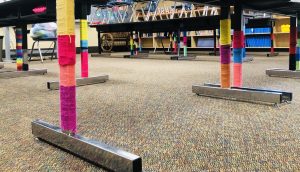 Yarn bombing: Have you ever wanted students to personalize their learning environment in a way that was connected to their actual learning? The solution I came up with was “yarn bombing” desks. For this activity, students wrapped their desks with yarn that was symbolic of the various SDGs they felt the most passionate about. Each color represented one of the 17 SDG icons. And once they were all done, they had to explain why they chose the different colors. This activity is easy to manage, inexpensive, and gives students a chance to display their artistic expression.
Yarn bombing: Have you ever wanted students to personalize their learning environment in a way that was connected to their actual learning? The solution I came up with was “yarn bombing” desks. For this activity, students wrapped their desks with yarn that was symbolic of the various SDGs they felt the most passionate about. Each color represented one of the 17 SDG icons. And once they were all done, they had to explain why they chose the different colors. This activity is easy to manage, inexpensive, and gives students a chance to display their artistic expression.
Advocacy Comics: My favorite SDG resource, without a doubt, is The World’s Largest Lesson. This student-friendly website was created in a collaboration between Project Everyone and UNICEF. It houses just about everything you’ll need to get started, including an awesome assortment of comics that are aligned to different goals. Using the comics as a model, I had students select a few SDGs they wanted to learn more about and research them on The World’s Largest Lesson site. After, they had to synthesize the information into their own comic to help their peers learn about the goals they selected.
SDG Bracelets: The last project involved having my students create a campaign for our entire district. They did this by creating bracelets that were aligned to different global goals (kind of like the yarn). My students loved stamping/hammering little charms with “SDG” on them. After making the bracelets, my students and I visited different classrooms and gave mini-presentations on the goals. From there, my students handed out the bracelets they made to other students and teachers.
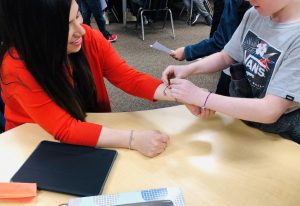
The STEM Connection
The amazing thing about the SDGs is that they can be easily embedded in just about any STEM-related learning segment. For instance, the best place to start is by looking at the Targets for Action resource. There, you can select any SDG you want to create a unit on. Upon selecting the guiding SDG, I recommend identifying sub-targets that you want students to learn about.

One life-changing project my students worked on involved transforming video-game-console controlers to adapt them for individuals with disabilities. When planning, I focused on SDG 10: Reducing Inequalities. Then I looked at the targets within the goal and identified opportunities to “promote universal social inclusion” and “ensure equal opportunities” within my lesson.
In terms of my actual content standards; research and writing components connected my ELA standards, constructing the game consoles and controllers to scale required math, and having students “generate and compare possible solutions to a problem” integrated my NGSS standards. Lastly, and most importantly, I was able to blend in lessons directly from Teaching Tolerance. This gave students insight into and understanding of disabilities and contributed to a learning experience that facilitated empathy in an authentic way. Moreover, students were given a chance to reflect on relevant social issues while creating with intention (e.g., researching developmentally appropriate modifications, considering joysticks/buttons that could be used without fingers/hands, etc.).



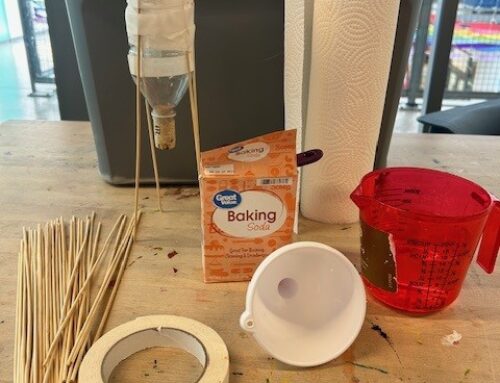

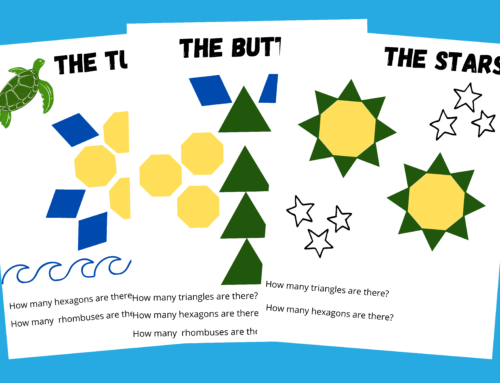

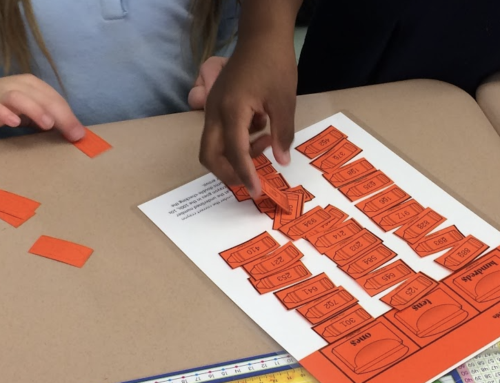

Leave A Comment